In the Philippines, particularly in the rural areas, bamboo abounds. Mostly, bamboos are found along river banks. Folktales state the supposed descendants of Filipinos — Malakas (strength) and Maganda (beautiful) — came out of bamboo. Of course, everyone knows that.
But what most Filipinos don’t know that what used to be known as the “poor man’s timber” is now gracing many high-end homes, hotels, and offices around the world. Yes, the humble bamboo has gone a long, long way.
“The global bamboo market size was valued at $68.8 billion in 2018 and is expected to grow at a compound annual growth rate of 5.0% from 2019 to 2025 to reach $98.30 billion by 2027,” said the website grandviewresearch.com. “Growing investments focused on infrastructure development, increasing use of sustainable building/construction resources, and rising consumer awareness regarding the uses and benefits of bamboos are expected to drive the market growth over the forecast period.”
Bamboos, along with rattan, provide several environmental, economic, and social benefits to society. “Bamboo is a sustainable resource that can grow under a range of climatic conditions, but preferably a tropical climate,” the website said. “It provides approximately 35% more oxygen and absorbs 40% more carbon dioxide as compared to trees, which results in a substantial improvement in the air quality. Further, cultivation of bamboo offers carbon fixation, controls soil erosion, and purifies the environment.”
In the world market, bamboo is more preferred over timber as the former is easier to harvest, transport and is relatively affordable.
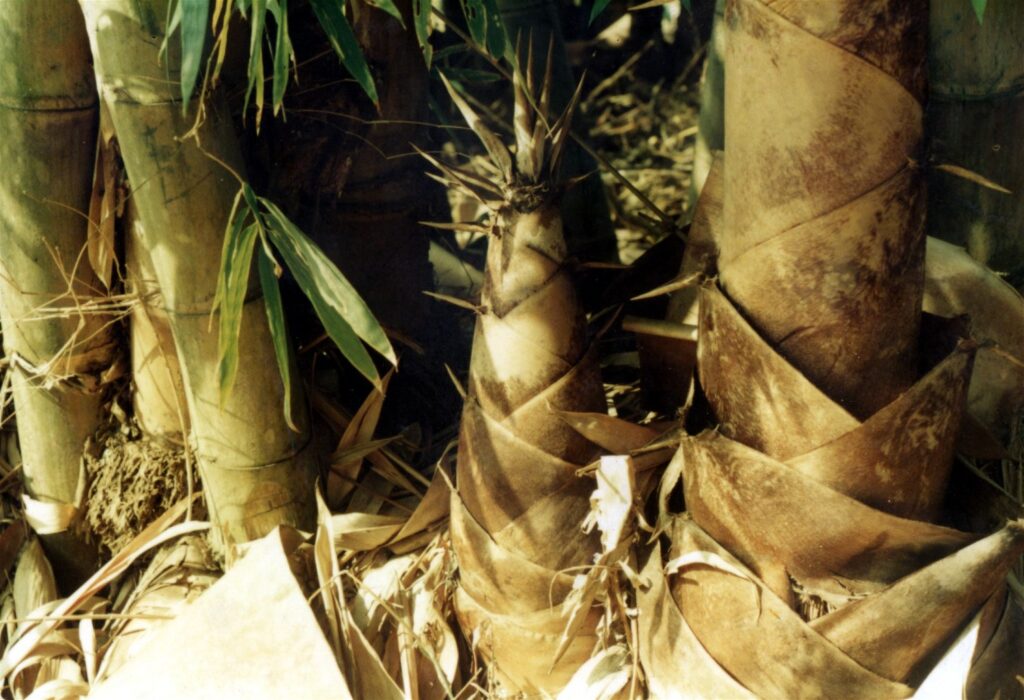
Bamboo shoot 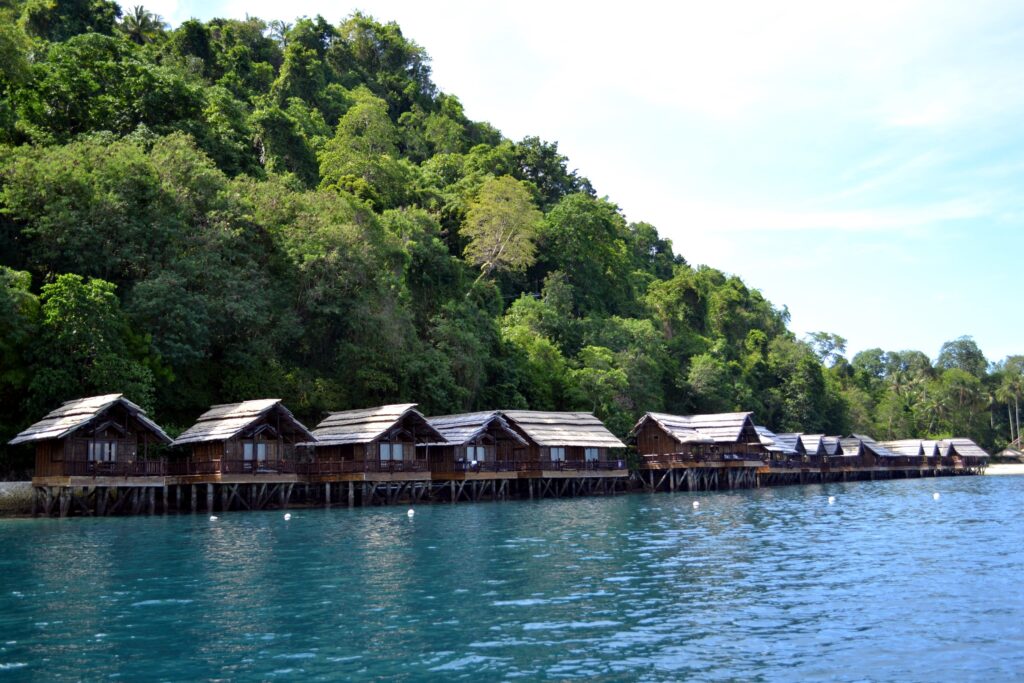
Bamboo houses 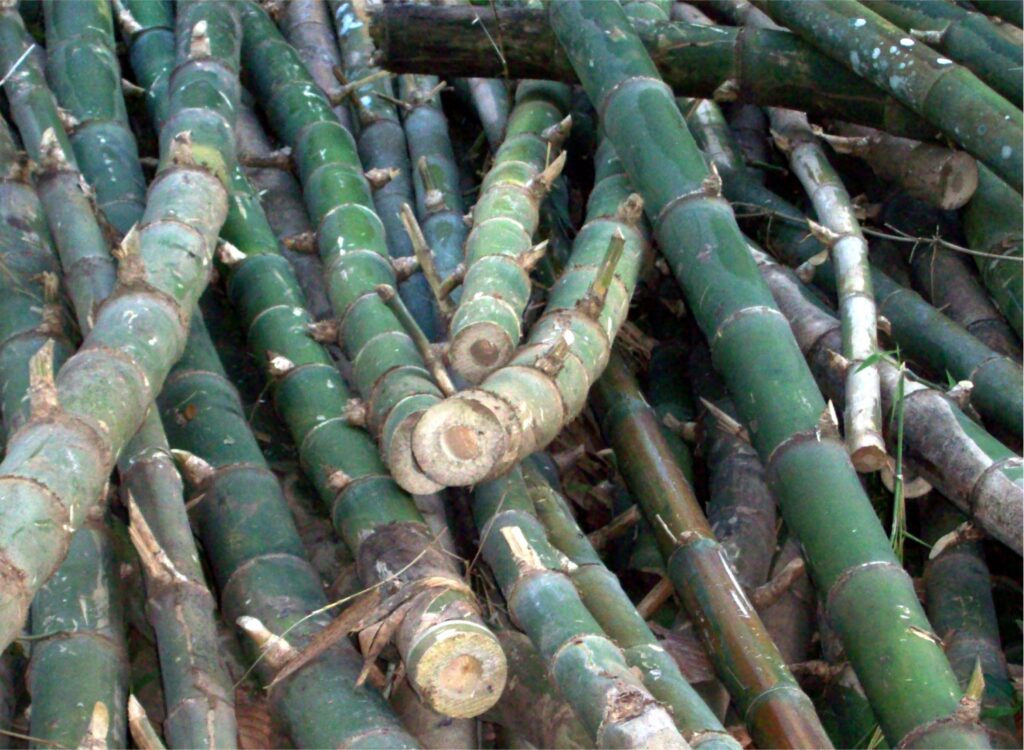
Bamboo poles
“(Bamboos) are water-resistant by nature and offer high durability,” the website said. “These benefits result in the sustainable use of bamboos in applications such as furniture, shelter, and handicraft products. They are also used to produce flooring, charcoal, mats/screens, and woven products.”
In the Philippines, the Forest Products Research and Development Institute (FPRDI), a line agency of the Department of Science and Technology (DOST), is promoting the use of engineered bamboo.
Engineered bamboo, designed to be a replacement for wood, is a low-cost product manufactured from bamboo. It has been used as paneling, vehicle beds, concrete formworks, lightweight building construction. It is even used for shelters after the 2004 tsunami.
In comparison to the woods that have been traditionally used, a number of benefits and drawbacks have been identified with engineered bamboo. Lower cost, especially when replacing wood that would otherwise have been imported, is a key advantage. Further benefits include greater hardness and shape retention, especially in high temperatures.
“We are happy to say that the Philippines now has its own engineered bamboo industry,” says Dr. Romulo T. Aggangan, FPRDI director. “Although still immature and bugged by various problems, it is also blessed with a lot of strengths, and given enough support from concerned groups, can be expected to grow strong, and in time be able to meet the needs of local clients or even capture a slice of the global market.”
Among the most common species used for engineered bamboo are “kawayan tinik” (Bambusa blumeana), giant bamboo (Dendrocalamus asper), “bolo” (Gigantochloa levis), “botong” (D. latiforus), and “bayog” (B. merrilliana).
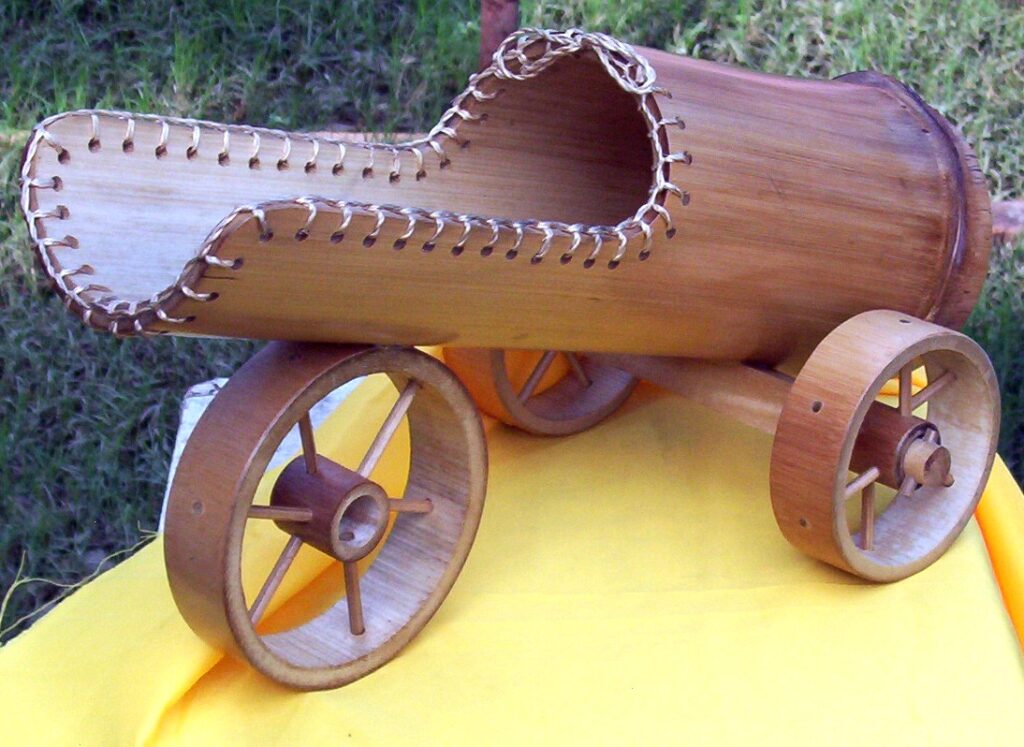
Bamboo toy 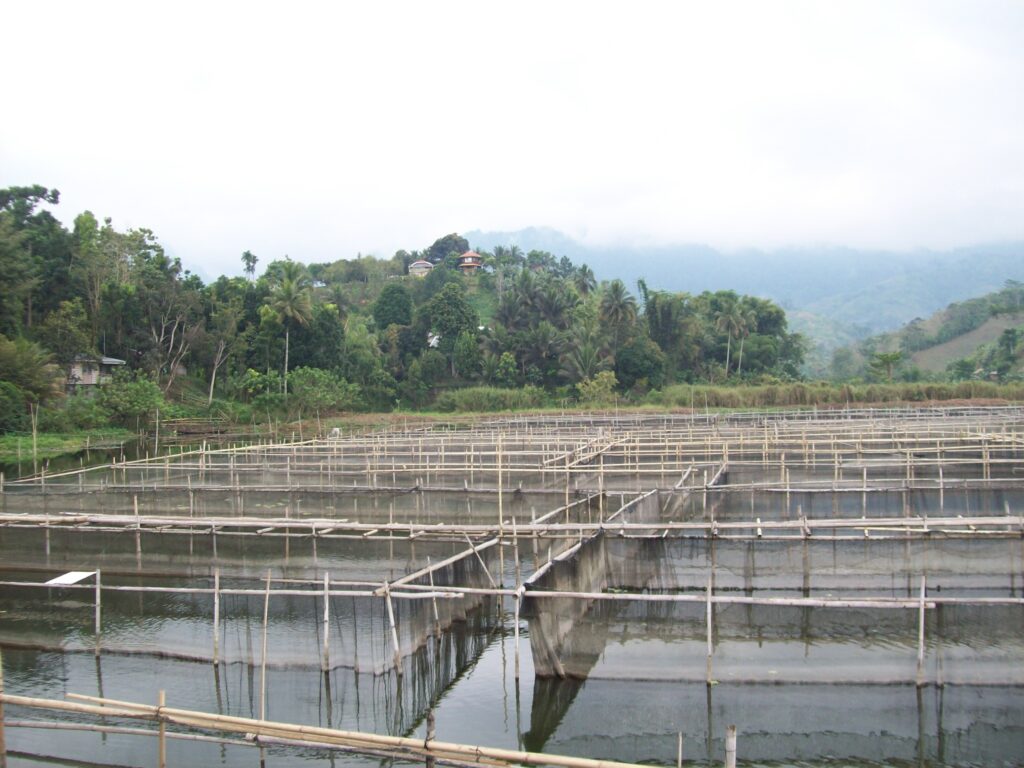
Fish pens 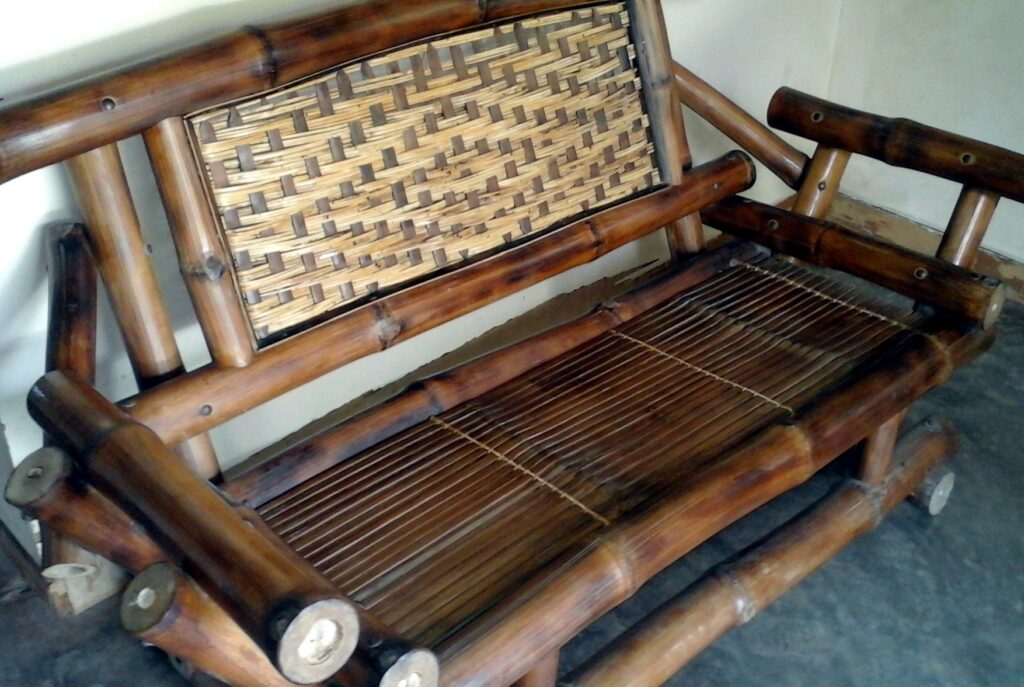
Bamboo chair
There’s a big demand for engineered bamboo. Since 2010, it has been mandated by law that 25% of all school desks and furniture in the country’s public schools should be made of engineered bamboo.
Indeed, there’s money in growing bamboo. In fact, Filipino farmers could earn a net income of “as much as P200,000 per hectare” by planting giant bamboo, according to Secretary Emmanuel Piñol of the Mindanao Development Authority (MinDA).
Piñol learned the profitability of bamboos when he visited the Bukidnon Giant Bamboo Resources Corporation recently. Several bamboo species grow in the Philippines, but giant bamboo (known in the science world as Dendrocalamus asper) is the most preferred commercially.
“Farmer can make a profit of P200,000 per hectare per year, year after year with minimal maintenance cost (no replanting, fertilizer, etc.),” said the prospectus released by Mindanao’s first bamboo processing facility.
“What makes bamboo a versatile crop is its regenerative characteristic where several shoots grow to replace a harvested pole,” said Rod Bioco, the corporation’s president who sets up the bamboo processing facility in Malaybalay City.
Among the end products the corporation produced are treated and dried bamboo slats (intermediate raw material), laminated bamboo lumber/beams and boards, and finished products (like doors, jambs, moldings, and furniture).
“Most of these materials are now manufactured in China and imported by construction supply companies,” said Piñol in a statement he posted on his Facebook.
Thus, growing giant bamboo is a profitable venture. The development cost of up to three years of rearing is P50,000 per hectare (100 to 150 clumps). According to the prospectus, initial harvest can be started after 5-6 years but commercial harvesting starts in the seventh year. Poles should be 3-5 years old.
Farmers get a net income of P90-P120 per pole. The yield is 120-150 poles per hectare per year or around 120-150 metric tons per hectare per year. Some farms get 1,500 to 2,000 poles per hectare per year (15-20 poles per clump).
The prospectus said the harvesting crew gets P50-P80 per pole, depending on the terrain, thus generating an income of more than P8,000 per 16-metric truckload per 4-5 days per crew of 6-7 people.
Ideally, the supply is within a 30-kilometer radius to control trucking costs (less than P50 per pole or P0.50 per kilogram). The plant capacity is 60,000 metric tons per year (two shifts) or 600,000 poles per year, which can be supplied from just 600 hectares of giant bamboo.
The buying price is P2.50 per kilogram on a delivered/unloaded basis.
The production capacity, when finished, is 200 metric tons per day or 2,000 fresh poles (3-5 years old at 40%mc), yielding 24,000 board feet per day. The investment is P150 million.
For dried, treated slats, they spent P55 per board feet and export them at P65 per board feet. “We sell engineered bamboo lumber or beams for P100 per board feet and panel boards for P120 per board feet,” Bioco said. “If we process them further into mouldings, floor panels, doors or jambs, we can sell for P180-P250 per board feet, while furniture can fetch P300-P500 per board feet.”
Bioco said they are hoping to sell more locally. “Every board foot of engineered bamboo is a board foot of a tree not being cut,” he pointed out.
For centuries, the beauty and durability of bamboo have been known among Asians. In China, for instance, bamboo is one of the four noblest plants (the three others are the orchid, the plum tree, and the chrysanthemum). It is also one of the three multi-purpose plants grown in thousands of Indonesian villages today, the other two being banana and coconut.
Although often listed as a “minor” forest product, bamboo is fast regaining its rightful place these days. According to an article, which appeared in Reader’s Digest, bamboo “is delicate enough to be used in phonograph needles, yet strong enough to be used in bridge construction.” As such, bamboo can replace or indirectly decrease the consumption of three critically scarce resources: wood, metal, and oil.
Bamboo is also indispensable in the fishing and banana industry. In Lake Sebu, South Cotabato, people use bamboo as a material for making rafts, fishing rods, outriggers for bancas, and for fish pens. In salt-water areas, bamboo is used as stakes in the culture of mussels and oysters.
In the banana industry, bamboo poles are used as props to support fruit-bearing bananas. The demand for bamboo props is large. In Davao alone, about 20 million props are needed every year. Experts say that growing bamboo for banana props is seen as a means to stop the illegal cutting of young commercial timber species in the forest to be used as banana props.
Bamboo is also used to manufacture musical instruments like horns, clarinets, saxophones, flutes, piccolos, xylophones, and drums. The world-famous bamboo organ at the Roman Catholic Church of Las Piñas is a historical example of the importance of bamboo.
There are also sophisticated uses of bamboo – charcoal for electric batteries, liquid diesel fuel obtained by distillation, and enzymes and media for shoot extracts used for culturing disease-causing bacteria. The white powder produced on the outer surface of young culms for the isolation of a crystalline compound is medically useful.
Bamboo can also fight hunger. The young bamboo shoots are a good source of vitamins and minerals. In Thailand, bamboo salt seasoning and bamboo salt soybean paste can be bought in public markets. In the Philippines, bamboo shoots are cooked with saluyot and shrimp sautéed with coconut milk.
Bamboo shoots emerge during the wet or rainy season. About 7-17 days after emergence, they may be harvested for food. The shoots are harvested using a sharp bolo or hatchet. To harvest, a sharp crowbar may be used.
“It’s a pity that we have neglected this important crop for so long,” says Jethro P. Adang, the director of the Mindanao Baptist Rural Life Center, a non-government organization based in Kinuskusan, Bansalan, Davao del Sur.
It’s never too late to plant bamboo now!

